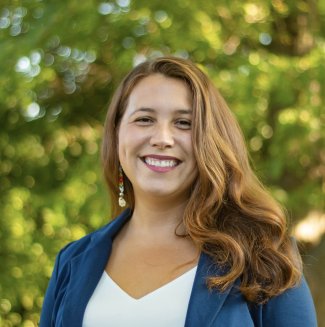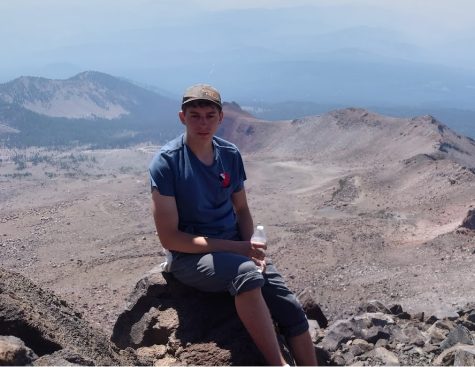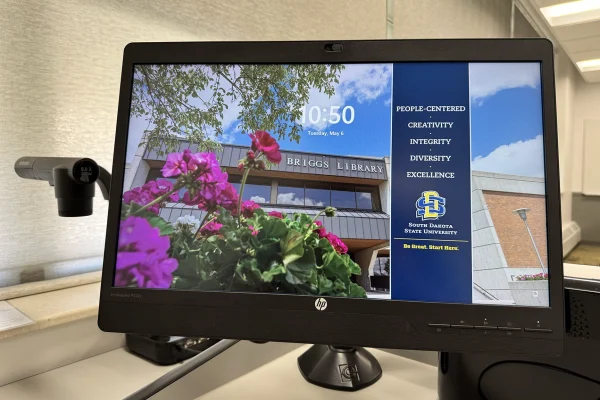Hauff brings Lakota language to new generation

Submitted
April 26, 2022
When South Dakota State University students tell their peers they’re taking a foreign language class, the assumption is usually Spanish, French or German. For senior Native American studies major Jessica Arkeketa, that’s not the case.
Arkeketa is a part of the entry-level Lakota language class. The four-day per week class, instructed by assistant professor of Lakota and American Indian and Indigenous Studies Tasha Hauff, is part of a larger mission to help connect younger generations of students with Native American heritage to their culture and community.
“I want [students] to be able to speak with their grandparents, their great-grandparents, and if they’re not Lakota, then the Lakota community that they build through my class,” Hauff said.
Arkeketa, who is from Oklahoma and has Otoe-Missouria tribe lineage, said she was initially “grumpy” about having to take two years of Lakota as part of her major.
“My thought was if I was going to learn a language, I’d rather learn my own language first,” Arkeketa said.
But through her time in Hauff’s course, Arkeketa said she doesn’t hold that view anymore. Since taking the course, she has been able to sharpen her Lakota skills at her job as a park guide at Pipestone National Monument.
“A lot of stories (on the plaques) are in Dakota and Lakota,” Arkeketa said. “Living up here and learning the language has really helped out understanding the things that go on [in Oklahoma] as well.”
Dakota and Lakota are regional dialects; to someone learning one dialect, the other will probably sound different. According to Tauff, the languages are mutually intelligible, meaning a fluent speaker in one dialect can communicate with a fluent speaker of the other dialect without much trouble.
“We’re working hard to make a bigger effort … to include more Dakota patterns and words,” Hauff said. “Sometimes it’s just a pronunciation difference. Someone who wants to learn Dakota will get a lot from the (Lakota) classes.”
For example, in Dakota, someone may refer to coffee as “phezuta sapa,” or “black medicine,” while in Lakota, a speaker may say “wakhalyapi,” or “heat it up.”
Hauff acknowledges learning Lakota has some unique challenges.
“I think some of the challenges Dakota and Lakota people feel learning Dakota or Lakota are generational trauma,” Hauff said.
Additionally, there is added pressure to help preserve the language for their communities and to speak fluently with elders.
On top of that, Lakota has mechanics many English speakers would find challenging to comprehend. Hauff’s favorite Lakota phrase is one example of the complex conjugations found in the language.
“Philamayaye,” Hauff said. “We use it in place of ‘thank you,’ but it actually means ‘you make me grateful.’ And you can conjugate it and do all of these fun things with it, like ‘you make us grateful’ (philaunyayapi).”
Hauff encourages SDSU students—Native American or not—to take a Lakota class if they’re interested, but to do it for the right reasons.
“Some people have really excellent linguistic skills that they can use to help the community … that’s a good reason to learn an Indigenous language,” Hauff said. “I would also argue that there are some not-so-good reasons.”
Hauff encourages “language collectors” who want to learn Lakota just to say they can speak it to become more involved in Native American communities and to not just “take.”
“You’re disregarding all of the colonial context that made this an endangered language to begin with,” Hauff said. “It can become more like appropriation than actually helping.”
While some view Lakota as a “dying language,” Hauff fervently disagrees.
“It’s right here, isn’t it?” she said.
And the class of SDSU students willing to learn shows Lakota is still very much alive.






















